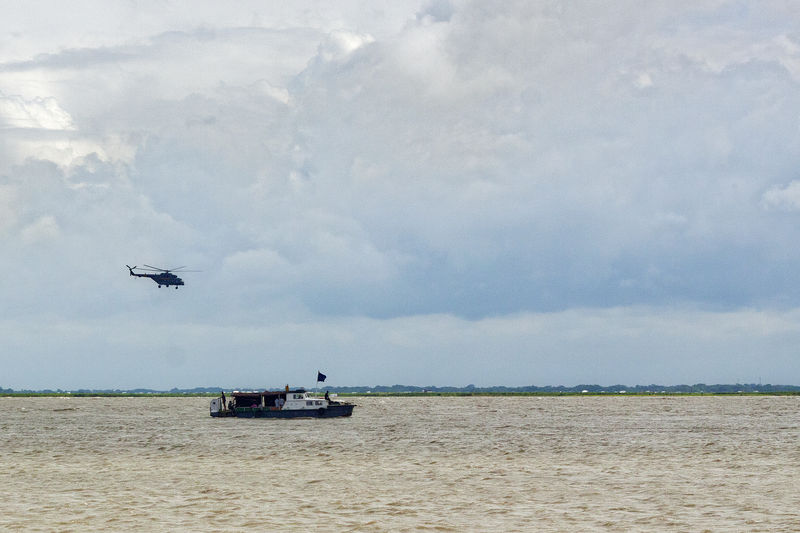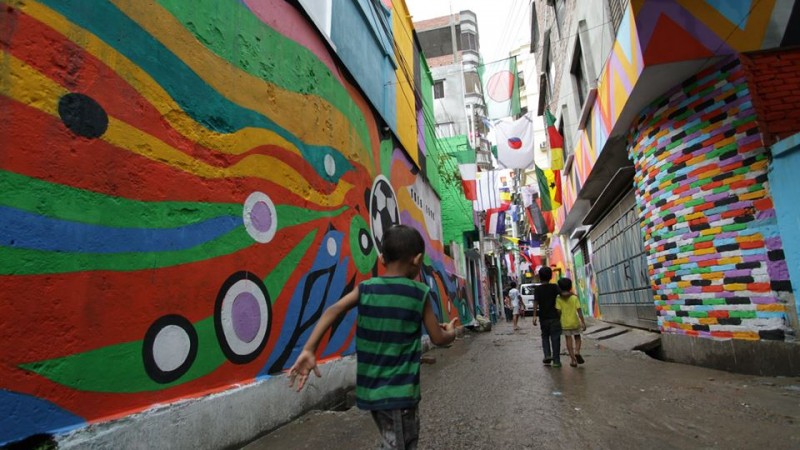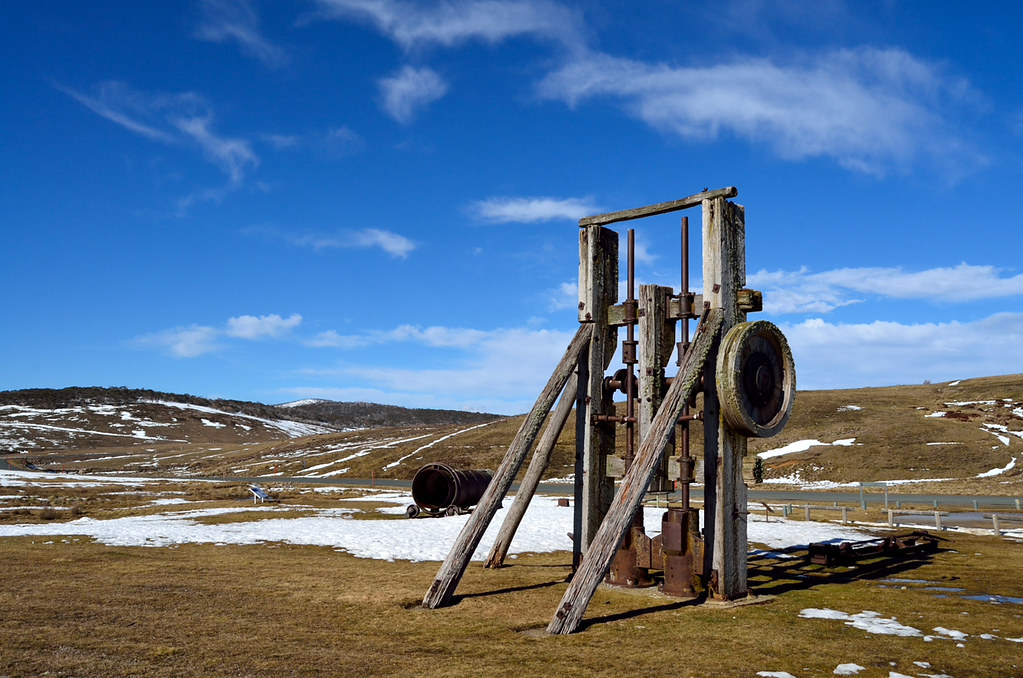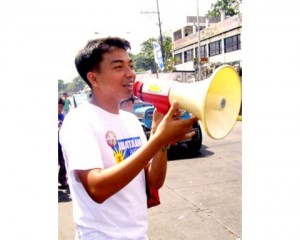1. The enquiry committee formed with former secretary Anis-uz-Zaman as its chairman and comprising of 12 members started its work with the responsibility of unearthing the background and cause of the BDR mutiny at Pilkhana on February 25 and 26, other related matters and make recommendations.
2. The enquiry committee visited the BDR headquarters and related installations and recorded statements of 107 people, including army officials and BDR members present at Pilkhana during the incident, members of the families of the army men, arrested rebel and detained, local civilians, media personalities, former Director General of BDR, politicians, chiefs of different forces and agencies, ministers and lawmakers. The Committee collected information (as far as possible) from different intelligence agencies and investigating agencies on the planning of the mutiny, its cause and motive, discontent in BDR and Daal Bhat programme.
Background of the rebellion
3. The mentality of not accepting authority of the army had been dormant among the BDR members for long. They had been demanding appointment of their own officers under a system as the BCS cadre, increase of border allowance, 100 per cent ration allowance, sending them to the UN Mission, restructuring of their salary structure in a similar model as that of the army. Besides, the Daal-bhat programme, punishment of sepoys, lack of transparency in running BDR shops, luxurious lifestyle of officials, corruption in running the schools etc gave rise to questions and discontent among the BDR men. They circulated leaflets at different times with the aim of venting their discontent and realising their demands. BDR authorities at different times took initiatives to solve the problems through raising some logical demands to the government.
Plan for rebellion and earlier attempts
4. A group of BDR members started getting organised over these demands centring the national election and tried to meet with different political figures. They became restless after failing to get expected response from the political personalities. In this background they held a number of secret meetings at different places with the aim of taking up action regarding their demands. They also planned to hold army officers, including the director general of BDR, as hostages in the Darbar on February 25. To implement the plan they decided to loot the armoury and take control of different important instillations including different entrances to the BDR headquarters.
Common soldiers thought that the soldiers would take up a stance in the darbar to realise their demands. But they did not have any idea about the real nature of the stand. Only a handful of hardcore mutineers knew about the plan to kill BDR director general and other army officers working with the BDR and other heinous activities.
Those who led the mutiny
5. Among the planners of the mutiny and those who lead it were: DAD Touhid, DAD Habib, DAD Jalil, DAD Nasir, DAD Rahim, Subedar Major Gofran, Nayek subedar Monoranjan, Habildar Assistant Moniruzzaman, sepoy Selim Reza, sepoy Tarek, sepoy Ayub, sepoy Kajal, sepoy Sahabuddin, sepoy Mainuddin, sepoy Rezaul, sepoy Rubel, sepoy Habib, sepoy Muhit, sepoy Nizam, sepoy Shahadat, Lance Nayek assistant Saidur, Ln nayek assistant Lutfor, Ln nayek Zakaria, sepoy Obaed etc.
Distribution of responsibility and start of mutiny
6. In the final meeting held on February 24 night the rebels distributed responsibility among themselves. As per the plan, some rebels of Rifle battalions 13, 24, 36 and 44 took control of gate nos 1, 3, 4 and respectively by 8 am and started looting the central armoury.
When the DG was delivering his address at the Darbar Hall at around 9:27 am two rebels (sepoy Mainuddin and sepoy Kajal) suddenly got on the stage. Sepoy Mainuddin was carrying arms. He aimed his arms at the DG. At that time a blank shot was fired outside which the rebels took as a signal to start the mutiny. Simultaneously some rebels present at the Darbar Hall shouted “Run!” and signaled the soldiers to leave the Darbar.
Afterwards, to instigate soldiers against the army officers throughout the country, outside Darbar Hall at the Pilkhana and later over mobile phones, wireless/walkie talkie, news was spread that officers had shot dead a BDR member at the Darbar Hall. Indiscriminate firing in and around the Darbar Hall started. About 40 army officers got stranded inside the Darbar Hall, others managed to flee. Most of those stranded in the hall were brutally killed.
Government attempt at peaceful solution
7. From the beginning of the mutiny, the government stressed on solving the prevailing problem through dialogue. Alongside, preparations were also taken for an army raid if necessary. In order to not let the visible presence of the army become an obstacle to the ongoing dialogue, the armed forces were told to take up their positions at a safe distance. In the meantime the prime minister handed the responsibility of bringing the rebels to talks to state minister Jahangir Kabir Nanak and whip Mirza Azam. By noon they took initiatives to establish contact with the rebels at Pilkhana gate no 4. At 3:30 pm they took a 14-member team of the rebels led by DAD Touhid to the prime minister’s official residence Jamuna for dialogue with the PM. After a two hour-long discussion, the rebels agreed to lay down their arms and return to the barracks and release all hostages and on these terms, they were given assurance that their demands would be met in phases and a general amnesty was announced.
8. After returning to Pilkhana a difference of opinions arose among the rebels regarding surrender of arms. As a result the decision taken at Jamuna was not implemented. Later from 8:00 pm, a second round of talks between a government team, led by the home minister, and the rebels was held at Hotel Ambala Inn in front of Pilkhana’s gate no 4. A series of meetings were held with different groups of the mutineers and their demands also changed. The mutineers prolonged the talks to facilitate the shifting of bodies, digging of mass graves, fleeing of BDR men from Pilkhana and looting in the cover of the night. In continuation of the talks, at around 1:00 am the home minister, the state minister for law and the IGP entered the Pilkhana premises. Another round of talks was held there and then at 3:00 am the rebels surrendered some arms to the home minister. But after her departure, they took up arms again. By early morning the home minister rescued 15 families being held hostage and brought them out from Pilkhana.
9. Different political leaders came to Pilkhana gate no 4 on February 26 morning They included minister Matia Chowdhury, state ministers Nanak, Qamrul Islam, whip Mirza Azam, MPs HM Ershad, Tapash, Asaduzzaman Noor, Golam Reza, Segufta Yasmin and Mahbub Ara Gini.
Grand alliance leaders Abdul Jalil, MPs Abdur Razzak, Rashed Khan Menon, Hasanul Haq Inu, Sheikh Selim, Mainuddin Khan Badal, Anisul Islam Mahmud, Nurul Islam BSC and Ziauddin Bablu arrived by noon.
Processions around Pilkhana
10. On February 25 and 26, some processions were brought out around Pilkhana area in support of the mutineers. Residents of Azimpur, Hazaribagh and New Market area participated in these processions. They chanted different slogans in support of the BDR men.
Media’s negative role
11. From the start of the incident, private TV channels spread the news of the mutiny at home and abroad through live telecasts. In doing so, they gave preference to the commercial aspects pf the situation over the national security. Where different intelligence agencies, the army and the government itself could not get details form inside the Pilkhana, mutineers in Dhaka and outside of Dhaka were able to get detailed news regarding the position of army and other on goings inside the Pilkhana thanks to the media. In general, the media encouraged the mutineers by publicising the news about the mutiny, and talk shows which created a sentiment against the government and the army among the people.
From the start of the BDR rebellion, it was seen that the media’s uncontrolled, irresponsible and biased transmission, and the easy availability of contact over mobile phones caused tension in BDR units outside Dhaka.
Preparation for talks and army operation and its risk
12. To quell the rebellion, preparation for an army operation and talks to solve the crisis was continued simultaneously. Though the army and Rab took up their positions around Pilkhana by 12 noon on February 25, they were not completely aware of the situation inside Pilkhana, the number of mutineers, the heavy weapons inside, or the exact location of the hostages. On one hand there was the risk of heavy casualty of civilian lives and property in an armed attack inside the densely populated Pilkhana area. On the other hand there was also a huge risk of the mutineers causing massive loss to the residents of the houses and other installations around Pilkhana. There also remained the risk that if the army operation was conducted without knowledge of the exact location of the hostages, then the mutineers could put the blame of the killings of army officers and their families, arson and looting on the army itself. In such a situation a civil war like situation would have been created in the country. Any army attack to check the rebellion could endanger the internal security of Bangladesh.
The Prime Minister’s address to the nation
13. The prime minister’s address was aired over the state TV and radio at 2:30 pm on February 26. She ordered the rebels to surrender their arms and return to the barracks. She warned them not to compel her to take stern measures against them. Preparations for an army operation was also taken as per the government’s decision in case the mutineers did not surrender their arms by the deadline given to them in the prime minister’s address.
End of mutiny
14. Announcements were made using microphones to people living within the three-kilometre perimeter area adjoining the Pilkhana, asking them to move to safety in order to keep the casualty down during an army drive. The Prime Minister’s speech completely shattered the morale of the rebels. They were compelled to accept all government decisions, as they had no other alternative. The rebels started final surrender of their arms to the home minister at 5:50 pm. Then the police, and the army the following morning, took up full control of Pilkhana.
Flight of the rebels and their accomplices
15. From the first day of the BDR mutiny, mutineers and their family members kept fleeing the Pilkhana premises in different ways. Immediately after the mutiny began at Darbar Hall, many of the BDR members (including officers) had fled Pilkhana.
Most of those who participated in the rebellion fled from Pilkhana during the nights of February 25 and 26 (except for around 200 BDR members). The mutineers mainly scaled the boundary walls on the west side and used gate nos 5 and 2 for their flight. Many abandoned their uniforms, boot etc that were found on the bank of a pond near the boundary wall near Bay Tannery.
Some helpful civilians aided the BDR men to flee by supplying them with clothes, food and water. They were led by former BNP ward commissioner Suraiya Begum, her two sons, local criminals Masud and Leather Liton. Many mutineers used the Keraniganj ferry ghat to flee. Former BNP lawmaker Nasiruddin Ahmed Pintu helped them flee by arranging engine-run boats to cross the river. Rab arrested 76 rebels while they were fleeing.
Rescue of hostages
16. Of the 107 army officials present at Pilkhana on February 25 a total of 50 survived. Of them some managed to flee on the start of the mutiny and the rest were rescued on February 26 from hostage. Though rebellion spread to 34 BDR units outside Dhaka none was killed there. 152 army officer and family members posted there could reach safety. All deputy commissioners and police supers as per government order provided them necessary assistance. They also took over the charge of the armoury of the units. Due to uncertain situation there was some confusion over the number of casualties, which was amended later.
Killings
17. Information received from different sources show that most of the army officers were killed by 11 am on February 25. Of the 57 army officers, 52 were killed in Darbar Hall and adjoining areas, 5 others were killed elsewhere inside the Pilkhana.
Nine BDR members were killed during the mutiny. Central subedar major Nurul Islam was killed at the beginning of the rebellion. Though no specific information is available regarding the death of the other eight BDR men, it is assumed that they were killed in cross fires when they obstructed mutineers. Besides an army soldier and four civilians were killed and about 30 others were injured.
Recovery of the bodies of martyred officials
18. After killing the army officers the rebels tried to hide the bodies. Bodies of two senior officers were disposed inside a manhole. Two bodies were recovered from Kamrangir Char area and bodies of seven other officers were recovered from the mouth of the sluice gate at the sewerage line adjacent to the embankment. A total of 53 bodies of officers and others were recovered from inside Pilkhana, most of them from the mass graves dug by the mutineers. Two bodies recovered have still not been identified.
What is the cause of the mutiny?
19. The real cause and motive behind the barbaric incident could not be established beyond doubt. The committee feels that further investigation is required to unearth the real cause behind the incident. The negative attitude among the general BDR members towards the army officers, and their discontent over unfulfilled demands may be identified as the primary cause of the mutiny. Analysis of these demands give the impression that such small demands can not be the main cause of such a heinous incident. These points have been used to influence the general BDR soldiers. The main conspirators may have used these causes to instigate this incident, they themselves working from behind curtains to destabilise the nation.
Subsidiary causes
19. Some subsidiary causes played direct/indirect role in realisation of the rebellion. These are: failure of the main intelligence agencies, their inefficiency and organisational failures, collusion of the Rifles Security Unit (RSU) with the mutineers, lack of necessary coordination between the BDR and the home ministry regarding the demands, instigation of the different demands of the mutineers by the electronic media and the information ministry’s overall lack of control over the media.
BDR soldiers also carries out rebellions in 1972 and 1991. But due to limitation of BDR laws, those responsible for the mutinies could not be punished and thus those incidents failed to discourage BDR members from carrying out revolts.
Motive of the mutiny
21. The main aim or motive of the mutiny was to destroy chain of command and render the BDR ineffective, discouraging army officers to work in BDR on deputation in future by brutally killing army officers, putting Bangladesh Army and the BDR on a collision course, destabilising the newly elected government, destroying internal security and stability of Bangladesh, tarnishing the image of the country abroad, and hamper the participation of Bangladesh in UN peacekeeping missions.
Long term impact of the incident
22. The mutiny incident is sure to have a long-term impact in Bangladesh. The BDR rebellion, which was a big threat to democracy, posed a huge challenge to the newly elected government. The rebellion was a threat to stability of the nation. The Army lost many meritorious and efficient officers. Their families lost their dear and near ones and the nation was deprived of their service. As an institution BDR was almost destroyed and has lost people’s trust and respect. Overall the army has also been affected. The reputation of Bangladesh Armed Forces earned in the UN Peace Mission also faces a threat. The dent it made on the morale of the armed forces would take time to recover.
Conspirators and their failed attempt
23. Those who do not believe in the independence and sovereignty of the country, those who do not believe in democracy, those who do not want o see Bangladesh as a stable, democratic and developing country, those who does not want Bangladesh to be secure and have a strong armed forces, made an attempt to reach their vile goals by putting the BDR and the army on a collision course through the BDR mutiny. The mutiny was quelled with political sagacity, wisdom and bold leadership.
Recommendations
24. The enquiry committee made some short term and long term recommendations for the government’s consideration and taking effective steps:
Short term recommendations
a) Immediate completion of trial of all crimes related to BDR killings under the laws of the army to ensure quick and exemplary punishment;
b) Immediate restoration of BDR command and control for the sake of national security;
c) Steps for proper honour and rehabilitation of the army officers, and families of those killed and affected in the BDR rebellion;
d) Steps for proper honour and rehabilitation of the family members of those BDR personnel, including central subedar Major Md Nurul Islam, who were killed in resisting the rebellion.
e) Proper compensation to the civilians who were killed and affected.
f) Steps for identification of the unidentified bodies- intensifying attempts to recover looted arms and ammunitions;
g) Arrest and trial of the absconding rebels;
h) Immediate formation of a permanent “National Crisis Management Committee (NCMC) at the highest level to face different national crises.
Long term recommendations
a) Reconstitution of BDR;
b) Redistribution of responsibility and duty of all intelligence agencies and formation of a permanent Central Intelligence Coordination Committee (CICC) at highest level;
c) Formation of counter intelligence forces for all intelligence agencies including the RSU;
d) Amendment and updating the laws and acts concerning BDR and other para military forces including the articles of rules concerning mutiny;
e) Updating the existing laws and rules to ensure proper work environment and facilities in the army, para military and law enforcing agencies;
f) Refixing the service tenure of all members of BDR personnel in line with those of the army;
g) Bringing a balance in the benefits, salaries and allowances of the army, para military and law enforcing agency personnel;
h) Avoiding the involvement of members of the army, para military and law enforcing agencies in programmes such as Operation Daal-Bhat, and instead engaging them in professional duties as far as possible;
i) Formulation of effective policies and fixing strategies for increasing coordination among the army, para military and law enforcing agencies under different ministries including the home ministry;
j) Formulation of necessary Code of Conduct for the media specifying their (print and electronic media) role in consolidating national security;
k) Controlling mobile telephone transmission tower (BTS) in the sensitive areas housing army, para-military and law enforcing agency establishments;
l) Separate enquiry into the irregularities in Daal-Bhat programme, BDR shop, Kalyan Trust, School Management, contracting etc;
m) Strict ban on any kind of persuasion in appointments in army, para military and law enforcing agencies, considering qualification as the only yardstick for such appointments and a departmental enquiry to find out and take action against those who were appointed in such ways;
n) Arranging more investigations to identify the main persons responsible for the BDR rebellion.
(Source)


































